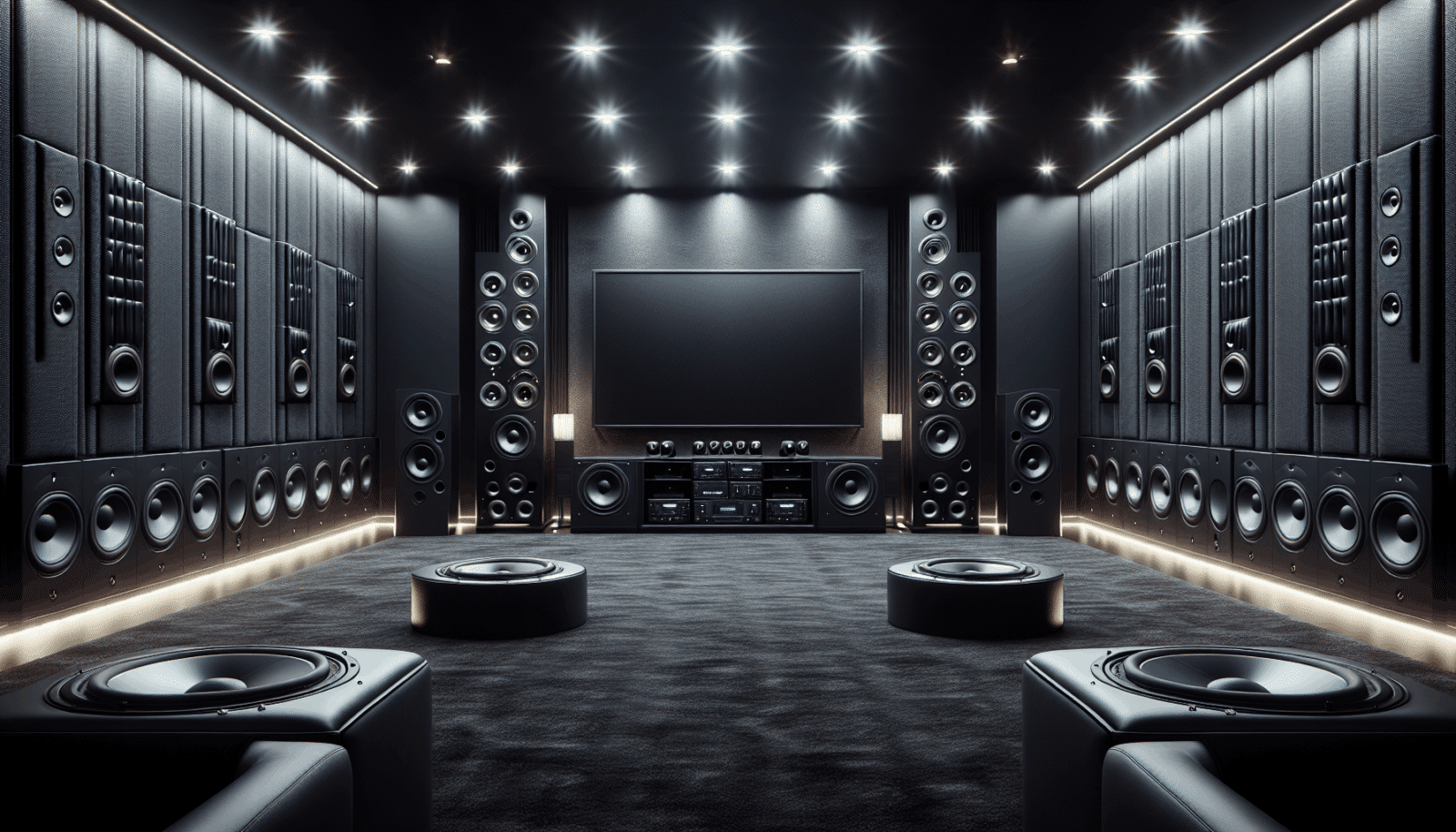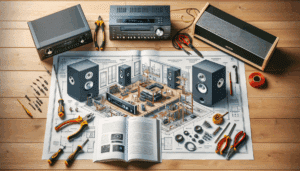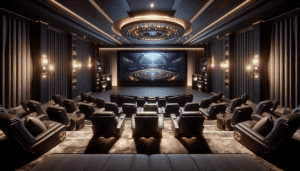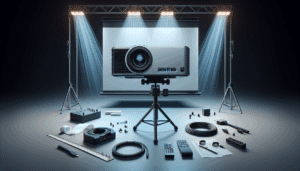At AZP Home Theaters & Automation, we know that setting up the perfect home theater can sometimes feel like solving an intricate puzzle. But worry not, as we’re here to guide you on the path to audio nirvana with our ultimate guide to home theater speaker placement! This comprehensive article is your key to unlocking the best sound experiences right in your living room, no matter your current setup. Let’s dive into the essentials and ensure your speakers are positioned to deliver the most immersive audio imaginable.
Understanding the Basics of Speaker Placement
When it comes to achieving superior sound quality in your home theater, understanding the basics of speaker placement is a must. Speakers don’t just rely on their own capabilities; their position and alignment play a crucial role in sound delivery. Typically, the fundamentals include knowing where to place the front, center, and surround speakers.
To begin, always consider the layout of your room and your primary seating position. These will dictate the optimal placement. It’s not just about aesthetics; it’s about striking the right balance so that the audio surrounds you naturally and immersively. This sets the stage for everything else in your setup.
Front Speaker Alignment
Front speakers are the lifeline of your audio setup. They are typically responsible for reproducing the majority of the audio track and should be positioned carefully. Ideally, your front left and right speakers should form an equilateral triangle with your primary seating position. This ensures the soundstage is wide and encompasses the listener.
Both speakers should be at ear level when you’re seated. This positioning guarantees clearer dialogue and more precise audio cues. If you have a TV Screen, placing these speakers slightly above or below the line of sight prevents any potential blockages or audio distortion.
Placing the Center Speaker
The center speaker holds the duty of delivering clear dialogue and should be directly in line with your screen. This is crucial as it matches the audio with the visual content, making your viewing experience all the more realistic and engaging.
Preferably, your center speaker should be placed either above or below your display. It must be centered as precisely as possible to prevent dialogue from sounding disembodied. Remember that the center speaker is your anchor; it ties together the audio from your entire setup, creating a seamless listening experience.
Surround Sound Speaker Tips
Surround sound speakers contribute to the depth and dimension of your audio experience, enveloping you in rich sound. These speakers are best positioned to the side or slightly behind your seating area. This placement allows them to accurately reflect background sounds and create a larger sense of space.
Adjusting the angle of these speakers is equally essential. Ideally, aim them towards your seating area and slightly towards the room for balanced acoustics. This creates an enveloping bubble of sound, making you feel like you’re part of the on-screen action.
Considering Room Acoustics
Room acoustics can significantly affect the quality of your home theater sound. Elements such as furniture, wall material, and carpet can either absorb or reflect sound, altering your listening experience. Fortunately, there are universal strategies to fine-tune your room acoustics to enhance speaker performance.
One solution is adding soft furnishings to absorb unappealing echoes. Alternatively, room treatments like Acoustic panels can efficiently control sound reflections. These tweaks can be the deciding factor between average and extraordinary sound quality.
Subwoofer Placement for Bass Lovers
Subwoofers are integral for delivering the low-frequency effects that add impact to your movies and music. Positioning this beast correctly takes a bit of experimentation, given its capacity to overpower other sounds if not well-managed.
Start by placing the subwoofer close to your primary seating area. This proximity ensures the bass waves reach you without delay. Fine-tuning it with placement around corners can also amplify the low range, enhancing the auditory depth. Remember, it’s about finding the sweet spot that enriches your listening pleasure without muddying other sound elements.
Calibration is Key
Investing time to calibrate your audio system is akin to the icing on the cake. Calibration, particularly with digital tools or built-in receiver software, balances your sound setup. It adjusts the levels, distance, and crossover of your speakers, ensuring each component works in harmony to maximize performance.
Additionally, regular calibration allows for an adaptive system that modifies any changes or upgrades you make to your setup. You’d be amazed at how calibrating adjustments can eliminate distortions and elevate your sound clarity to new heights.
Avoiding Common Mistakes
Now that you’re aware of best practices in speaker placement, it’s vital also to know what common pitfalls to avoid. Missteps in setup can lead to less-than-ideal sound performance, and we’re here to ensure that doesn’t happen.
- Overcrowding Speakers: Ensure there’s adequate space around each speaker. Cluttered environments will stifle sound projection and clarity.
- Ignoring Speaker Angles: Facing your speakers directly at your seating area prevents sound distortion, crucial for immersive results.
- Mismatched Speaker Heights: Maintain uniform speaker height for consistency in sound layers.
- Underestimating Wall Reflections: Consider potential echoes off walls, which might alter sound accuracy.
- Skipping Calibration: Without calibration, your setup may not deliver the full potential of your system, leaving sound imbalanced.
Understanding these common snags means you are already on the right path to smooth home theater sound.
Optimizing Multi-Room Speaker Layout
Thinking beyond your primary room can be the key to a fantastic home sound network. Multi-room speaker systems allow you to enjoy audio throughout your home, but optimizing their placement involves additional considerations.
Consider the size and shape of each room, as this affects speaker layout. Accentuating each room’s unique features will provide a consistent audio experience across spaces, transforming your home into a dynamic soundscape.
Conclusion
Setting up your home theater speaker system doesn’t have to be a daunting task. By calling us at 385-475-3549 or reaching out to Request a Free Quote, you’re one step closer to achieving audio excellence.




